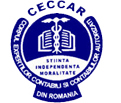
Audit
CONDITIONS FOR MANDATORY AUDIT
Internationally (and this applies also to Romanian subsidiaries) companies are audited for stock exchange listing, but often it is just a Group policy enforced by shareholders.
According to the Romanian laws, the conditions for mandatory audit are defined in the article 5 of the Finance Ministry Order 1752/2005 which enforces in Romania the European Directives, applicable starting 2006.
This law defines two main buckets of criteria which lead to mandatory audit:
(1) Size criteria (defined in the article 3 of the same law): if at the year-end, two out of the following three conditions are met:
- Total assets exceed 3.650.000 EUR
- Turnover exceeds 7.300.000 EUR
- Average number of employees during the year exceeds 50
(2) Public interest companies (defined by the Ordinance 907/2005)
- Credit institutions
- Insurance and reinsurance companies
- Entities regulated and supervised by the National Commission for Equities
- Companies whose equities are listed on the Stock Exchange
- National companies
- Legal entities belonging to and consolidated by Groups which apply the IFRS
- Legal entities other than the above ones, with grants or loans guaranteed by the State.
Subsequently, by the Ordinance 28/2006, the conversion of leasing companies into Nonbank Financial Institutions raised also the condition for mandatory audit of their financial statements (art. 18(2)).
STATUTORY CONSOLIDATION
The Romanian laws are enforcing, through the laws OMFP1752/2005 and Accounting Law 82/1991 republished, that Romanian parent companies are preparing and submitting consolidated financial statements starting with the financial year 2007, with reporting deadline at end of August. The law is in accordance with the VII-th European Directive on consolidated accounts.
The consolidated financial statements are due if the companies together are exceeding two out of the following limits:
- Total assets over 17.520.000 EUR
- Turnover exceeding 35.040.000 EUR
- Employees more than 250.
These financial statements must be audited.
INTERNAL AUDIT
In spite of similarity in words, the internal audit is very different to the external (financial) audit.
| RELEVANT COMPARISON | Internal audit | External (financial) audit |
| Scope | Internal processes within the organization | Financial statements |
| Areas of interest | Operational | Financial - accounting |
| Focus | Economy, efficiency (optimize inputs), effectiveness (optimize outputs), risks, compliance with law, internal control, rules and procedures | Fair statement of economic reality in the financial statements and notes |
| Progress in time | Permanent | Yearly |
| To whom it is reported | To management | To shareholders |
| Transparency | Internal, confidential document | Audit Opinion - public document |
| Analysis of risks and internal control | It is a purpose itself, to check efficiency, effectiveness, identification of incompliance and informing the management for measures and optimization | It is performed for documentation and understanding the organization and identification of risks with the purpose of planning the audit; may generate confidential reports to management |
| Relationship with each other | Collaborate with the external auditors and supplies information | Use the information from internal auditors; assess the quality of internal control |
| Fraud | One of the objectives of internal audit is prevention, deterring, identification of fraud and establishing systems of control against fraud | Elements of fraud may enter in the auditors' attention during their activity but identification and reporting fraud does not represent the financial auditors focus |
| Laws | Companies' Law 31/1990 amended states that companies who meet the criteria for external (financial) audit must organize an internal audit function too. There is also a Decision of Auditors' Chamber 88/2007 regulating the internal audit | Explained above (conditions for mandatory audit) |
Examples of internal audit procedures:
- Check the authorization of payments, purchases, discounts
- Check the system of obtaining several offers for the investments
- Check of quality assurance systems
- Examination of incidents and errors
- Monitoring projects - i.e. a software implementation
- Analysis on indices - i.e. scrap rate
- Centralizing operative reports - i.e. conclusions after an inventory count
- Anti-fraud procedures - i.e. check the transactions with cash and transactions with related parties
MINIMUM AUDIT PROCEDURES
According to the professional regulations issued by the professional body's Decision 44/2005 (Romanian Chamber of Financial Auditors, CAFR), an Audit engagement must involve minimum mandatory Audit procedures over a year, defined by the Decision. The completion of these minimum procedures is quantified by CAFR at a normal level of 240 working hours, and the level may decrease to 180 hours for simple entities.
In establishing the cost of an Audit mission, the starting point is the minimum working volume as defined above, and additional volume is calculated according to the particularities of the Audited company: significant inventories, complex reporting packages, several working points/units, initial audit which must cover the prior year also, complex costing systems, volume of activity, etc.














